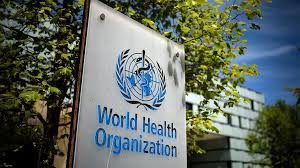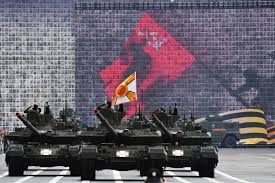On Monday, August 25, 2025, the World Health Organization (WHO) issued a renewed and impassioned call for an immediate ceasefire in Gaza following a series of devastating Israeli airstrikes on the Nasser Hospital in the southern Gaza Strip. The attacks, which claimed the lives of at least 20 individuals, including health workers and journalists, and injured 50 others, have further strained an already fragile healthcare system in the region. The strikes targeted critical infrastructure within the hospital, exacerbating the humanitarian crisis and drawing widespread condemnation from international bodies, including the United Nations (UN) and its agencies. This report provides a detailed examination of the incident, its implications for Gaza’s health system, the broader humanitarian crisis, and the global response, while contextualizing the ongoing conflict and its devastating toll on civilians, healthcare workers, and journalists.
The Incident: A Devastating Blow to Gaza’s Healthcare System
The Nasser Hospital, one of the few remaining functional medical facilities in southern Gaza, was struck by Israeli airstrikes on Monday, resulting in catastrophic consequences. According to WHO Director-General Tedros Adhanom Ghebreyesus, the main building of the hospital, which houses the emergency department, inpatient ward, and surgical unit, sustained direct hits. The emergency staircase, a critical lifeline for evacuations and access, was also damaged, further hampering the hospital’s ability to function. The attack killed at least 20 people, including healthcare workers and journalists, and left 50 others injured, many of whom were critically ill patients already receiving treatment.
The loss of life and infrastructure at Nasser Hospital represents a significant blow to Gaza’s healthcare system, which has been teetering on the brink of collapse due to prolonged conflict, blockades, and resource shortages. Hospitals in Gaza have faced relentless pressure, with many facilities damaged, understaffed, or forced to operate with limited supplies of electricity, fuel, and medical equipment. The targeting of a major hospital like Nasser underscores the dire circumstances faced by medical personnel and patients, who are caught in the crossfire of a conflict that shows no signs of abating.
Dr. Ghebreyesus condemned the airstrikes in the strongest terms, describing them as “devastating” to an already fragile health system. “While people in Gaza are being starved, their already limited access to healthcare is being further crippled by repeated attacks,” he said in a statement. His remarks highlighted the compounding effects of the conflict, where food insecurity, lack of medical care, and ongoing violence have created a humanitarian catastrophe. Ghebreyesus’s call for an immediate ceasefire was unequivocal: “We cannot say it loudly enough: stop attacks on healthcare. Ceasefire now.”
The Human Cost: Victims and Heroes
Among the victims of the airstrikes was journalist Mariam Abu Dagga, whose death sent shockwaves through the international community. Abu Dagga had collaborated with the UN Office for the Coordination of Humanitarian Affairs (OCHA) on a 2024 photo essay that documented the harrowing conditions in Gaza. Her work provided a vital window into the human toll of the conflict, capturing the resilience and suffering of ordinary Gazans. Her death is not only a personal tragedy but also a stark reminder of the risks faced by journalists working in conflict zones, where their role as witnesses to truth is often met with violence.
The loss of healthcare workers in the attack further compounds the crisis. Medical personnel in Gaza operate under unimaginable conditions, often working long hours with limited resources while facing the constant threat of violence. The targeting of hospitals violates international humanitarian law, which explicitly protects medical facilities and personnel during armed conflicts. The deaths of these workers represent not only a loss of life but also a loss of critical expertise and capacity in a region where every doctor, nurse, and paramedic is essential to saving lives.
The 50 individuals injured in the attack included critically ill patients, many of whom were already receiving treatment for life-threatening conditions. The destruction of the hospital’s main building and emergency staircase has made it nearly impossible to provide adequate care to these patients, further endangering their lives. The ripple effects of the attack will likely be felt for weeks, if not months, as the hospital struggles to recover and resume operations.
International Condemnation and Calls for Action
The airstrikes on Nasser Hospital prompted swift and widespread condemnation from international leaders and organizations. The head of the UN Palestinian Refugee Agency (UNRWA), Philippe Lazzarini, described the attacks as an attempt to “silence the last remaining voices reporting on the humanitarian crisis.” Lazzarini’s statement pointed to the deliberate targeting of journalists and humanitarian workers, who play a critical role in documenting the conflict and advocating for aid. He called for unrestricted humanitarian access, protection for journalists and aid workers, and an end to what he termed a “manmade famine” in Gaza.
Lazzarini’s reference to a “manmade famine” underscores the dire food insecurity crisis in Gaza, where blockades and restrictions on aid have left millions on the brink of starvation. According to UN reports, more than 80% of Gaza’s population is facing acute food shortages, with children and the elderly particularly vulnerable. The destruction of healthcare infrastructure, coupled with limited access to food and clean water, has created a vicious cycle of suffering that threatens to claim even more lives.
UN Secretary-General António Guterres also condemned the airstrikes, calling for a “prompt and impartial investigation” into the incident. His spokesperson, Stéphane Dujarric, emphasized the extreme risks faced by journalists and medical personnel in Gaza. “The killings underscore the intolerable dangers faced by those who are simply trying to do their jobs—whether it’s saving lives or reporting the truth,” Dujarric said. Guterres reiterated his long-standing demands for a permanent ceasefire, the protection of civilians, unhindered humanitarian access, and the unconditional release of all hostages held in Gaza.
The UN’s response reflects a broader international consensus on the need to address the humanitarian crisis in Gaza. However, the repeated calls for a ceasefire have yet to yield tangible results, as the conflict continues to escalate. The international community’s ability to enforce accountability and protect civilians remains limited, raising questions about the efficacy of global governance in addressing such crises.
The Broader Context: A Protracted Conflict
The airstrikes on Nasser Hospital are part of a broader pattern of violence in Gaza, where the Israeli-Palestinian conflict has reached new levels of intensity. The conflict, rooted in decades of territorial disputes, political tensions, and competing national aspirations, has been marked by cycles of violence, ceasefires, and failed peace negotiations. The current escalation, which began in October 2023, has been one of the deadliest phases of the conflict, with thousands of civilians killed and entire communities displaced.
Gaza, a densely populated enclave of 2.3 million people, has been under a blockade imposed by Israel and Egypt since 2007, following the takeover of the territory by Hamas. The blockade has severely restricted the movement of goods and people, leading to chronic shortages of food, medicine, and other essentials. The healthcare system, already strained by years of underinvestment and conflict, has been pushed to the breaking point by the recent surge in violence.
Hospitals like Nasser have become symbols of resilience and desperation, serving as both medical facilities and shelters for displaced families. However, their role as safe havens has been undermined by repeated attacks, which have drawn widespread condemnation but little concrete action. The targeting of healthcare infrastructure violates the principles of international humanitarian law, specifically the Geneva Conventions, which mandate the protection of medical facilities and personnel during armed conflicts.
The conflict has also taken a heavy toll on journalists, who face immense risks to report on the ground. According to the Committee to Protect Journalists (CPJ), more than 100 journalists and media workers have been killed in Gaza since October 2023, making it one of the deadliest conflicts for journalists in recent history. The death of Mariam Abu Dagga and others highlights the urgent need for measures to protect those who document the human cost of war.
The Humanitarian Crisis: A Multifaceted Catastrophe
The airstrikes on Nasser Hospital are just one facet of a broader humanitarian crisis in Gaza. The region is grappling with multiple overlapping challenges, including food insecurity, lack of access to healthcare, and widespread displacement. According to UNRWA, more than 1.9 million people—nearly 90% of Gaza’s population—have been displaced since the onset of the current conflict. Many are living in overcrowded shelters, schools, or makeshift camps with limited access to basic necessities.
The “manmade famine” described by Lazzarini is a direct result of restrictions on humanitarian aid, which have been exacerbated by the blockade and ongoing hostilities. Humanitarian organizations have struggled to deliver food, water, and medical supplies to those in need, with aid convoys often delayed or blocked at border crossings. The destruction of infrastructure, including roads, water systems, and power plants, has further complicated aid delivery, leaving millions without access to clean water or electricity.
The healthcare crisis is particularly acute. Gaza’s hospitals are operating at a fraction of their capacity, with many facilities damaged or destroyed. Medical supplies, including essential drugs and surgical equipment, are in short supply, forcing doctors to make impossible choices about who to treat. The loss of healthcare workers in attacks like the one on Nasser Hospital further depletes the system’s capacity, creating a vicious cycle where the most vulnerable are left without care.
Children are among the hardest hit by the crisis. UNICEF reports that thousands of children in Gaza are suffering from malnutrition, with many at risk of starvation. The psychological toll of the conflict is also profound, with children experiencing trauma from constant bombardments, loss of family members, and displacement. The long-term impact of these conditions on Gaza’s youth could have devastating consequences for the region’s future.
The Role of International Humanitarian Law
The targeting of Nasser Hospital raises serious questions about compliance with international humanitarian law (IHL). The Geneva Conventions, which form the cornerstone of IHL, explicitly prohibit attacks on hospitals, medical personnel, and civilians during armed conflicts. Hospitals are considered protected objects, and any attack on them must be justified by military necessity—a threshold that is rarely met in practice.
The repeated targeting of healthcare facilities in Gaza has drawn accusations of war crimes from human rights organizations and international observers. Amnesty International, Human Rights Watch, and other groups have called for independent investigations into attacks on hospitals and other civilian infrastructure. However, the lack of accountability for such violations remains a significant challenge, as political considerations often impede justice.
The protection of journalists is another critical issue under IHL. Journalists are considered civilians and are entitled to the same protections as other non-combatants. The deliberate targeting of journalists, as suggested by Lazzarini’s statement, constitutes a violation of IHL and undermines the principles of press freedom and the right to information.
The Global Response: Challenges and Opportunities
The international community’s response to the airstrikes on Nasser Hospital has been marked by strong rhetoric but limited action. The WHO, UNRWA, and UN Secretary-General have all called for a ceasefire, humanitarian access, and accountability, but these demands have yet to translate into meaningful change on the ground. The complexity of the Israeli-Palestinian conflict, coupled with geopolitical divisions, has hindered efforts to broker a lasting ceasefire or address the root causes of the crisis.
The UN Security Council, which has the authority to enforce international law and impose sanctions, has been paralyzed by divisions among its permanent members. The United States, a key ally of Israel, has repeatedly vetoed resolutions calling for a ceasefire, citing Israel’s right to self-defense. Meanwhile, other countries, including China and Russia, have advocated for stronger measures to protect civilians in Gaza. These divisions reflect the broader challenges of achieving consensus on contentious global issues.
Humanitarian organizations face their own set of challenges in responding to the crisis. Funding shortages, logistical barriers, and security risks have hampered their ability to deliver aid effectively. The WHO and UNRWA have called for increased donor support to address the immediate needs of Gaza’s population, but the scale of the crisis requires a coordinated global response that goes beyond emergency aid.
There are, however, opportunities for progress. The international outcry over the Nasser Hospital attack could galvanize support for a ceasefire and renewed peace talks. Civil society organizations, including grassroots movements and advocacy groups, have played a critical role in raising awareness and pressuring governments to act. The global media, despite the risks faced by journalists, continues to shine a light on the crisis, amplifying the voices of those affected.
The Path Forward: A Call for Comprehensive Solutions
Addressing the crisis in Gaza requires a multi-faceted approach that combines immediate humanitarian action with long-term political and diplomatic efforts. The WHO’s call for a ceasefire is a critical first step, as sustained violence will only deepen the suffering of Gaza’s population. A ceasefire must be accompanied by measures to ensure unhindered humanitarian access, allowing aid organizations to deliver food, water, and medical supplies to those in need.
The protection of civilians, healthcare workers, and journalists must be a priority. This includes enforcing international humanitarian law and holding perpetrators of violations accountable. Independent investigations into attacks like the one on Nasser Hospital are essential to establish the facts and ensure justice for victims.
In the long term, addressing the root causes of the conflict is essential. This includes tackling the socio-economic challenges that fuel instability, such as poverty, unemployment, and lack of access to education. International donors and organizations must invest in rebuilding Gaza’s infrastructure, including its healthcare system, to create a foundation for recovery and resilience.
Diplomatic efforts to revive the Israeli-Palestinian peace process are also critical. While previous negotiations have failed to produce lasting results, a renewed commitment to dialogue, supported by international mediators, could pave the way for a sustainable resolution. This will require compromise from all parties, as well as a willingness to address contentious issues such as borders, settlements, and the status of Jerusalem.
Conclusion
The airstrikes on Nasser Hospital represent a tragic escalation in Gaza’s ongoing humanitarian crisis, highlighting the urgent need for a ceasefire and comprehensive international action. The loss of 20 lives, including healthcare workers and journalists like Mariam Abu Dagga, underscores the devastating toll of the conflict on those who are working to save lives and tell the truth. The WHO’s renewed call for a ceasefire, echoed by UNRWA and the UN Secretary-General, reflects a growing consensus on the need to end the violence and protect civilians.
The crisis in Gaza is not just a regional issue but a global one, demanding the attention and action of the international community. The destruction of healthcare infrastructure, the silencing of journalists, and the suffering of millions of civilians cannot be ignored. By combining immediate humanitarian aid with long-term diplomatic efforts, the world has an opportunity to address the root causes of the conflict and build a path toward peace. The voices of Gaza’s people, amplified by the courage of its healthcare workers and journalists, must be heard—and acted upon—before it is too late.






